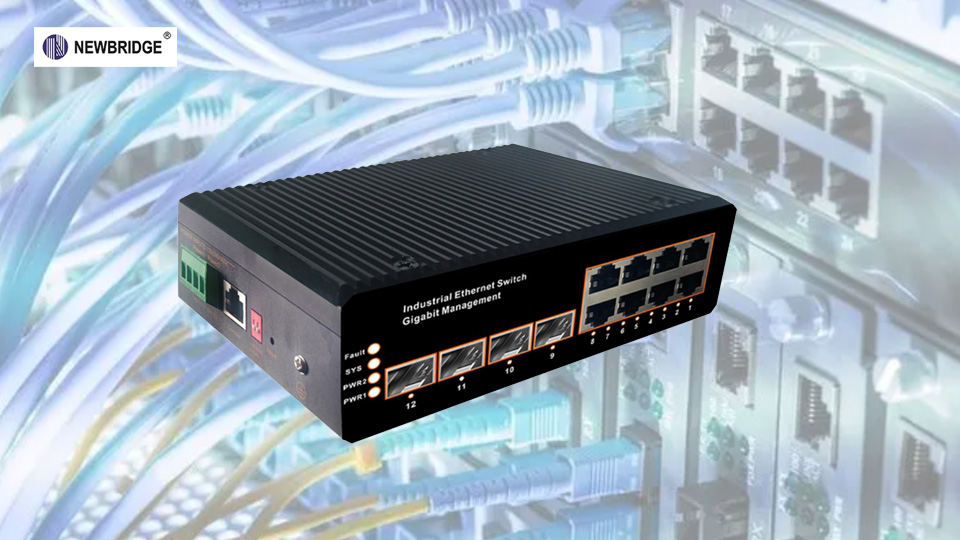Fault phenomenon
The production line control system of a certain factory suddenly went on strike, and data cannot be transmitted or monitored. The engineer tried to ping the management IP address of the industrial switch with a computer, but the result showed "connection failure", which could have paralyzed the data collection and monitoring system of the entire production line.

Troubleshooting steps
1. Physical layer inspection (first look at the visible and tangible areas)
Check if the power light on the switch is on: If the light is not on, it may be a problem with the power supply.
Check if all network cable plugs are securely plugged in: it's possible that some network cable wasn't plugged in properly, causing the signal to not be transmitted.
Use a cable tester to test whether the network cable is connected or not: it's like a doctor giving a patient a physical examination to see if the network cable is "sick" (broken or poorly connected).
Check if the fiber optic interface is clean and whether the measured light power is sufficient: if there is dust on the interface or the light power is too weak, it will also affect communication.
2. Network layer diagnosis (check "Invisible Network Settings" again)
Try logging into the switch through the console port (similar to the "backdoor" of a switch) using a local computer: it's like opening a door with a key, see if you can go in and see what's inside.
Check if the IP address setting of the switch is correct: The IP address is like the "house number" of the switch in the network. If it is written incorrectly, others will not be able to find it.
Check if there is any mistake in VLAN division and port allocation: VLANs are like "grouping" devices in the network. If they are grouped incorrectly, devices cannot chat with each other normally.
Check if the ARP table entries are correct: The ARP table is like a "contact book" in the network. If the information in the contact book is incorrect, the devices cannot find each other.
3. In depth analysis (digging up "hidden problems")
Check if the "brain" (CPU) and "memory" of the switch are busy: if the utilization rate is too high, it may be because the switch is exhausted and cannot handle so many tasks.
Go through the log files and see if there are any strange records: the logs are like the "diary" of the switch, which may record when something went wrong.
Think about whether it's a cyber attack or a broadcast storm: like a thief or a group of unwelcome guests entering the house, causing chaos on the internet.
Try pinging the loopback address of the switch: The loopback address is like a "test channel" left for oneself by the switch. If it doesn't even ping oneself, it must be an internal problem.
Solution
Finally, it was discovered that there was a bug in the firmware of the switch, just like a vulnerability in computer software, causing continuous memory leaks (memory being secretly occupied and decreasing). The solution is as follows:
Restart the switch first, let it take a breath, and temporarily restore communication: it's like if your phone is stuck, restarting it may fix it.
Download and install the latest firmware version, fix that bug: it's like upgrading computer software and fixing vulnerabilities.
Set up a regular automatic restart strategy as a transitional solution: it's like giving the switch a "vacation" regularly to take a break and avoid exhaustion again.
Develop a regular maintenance plan for the switch: Just like regularly maintaining a car, keep the switch in good condition.
Experience summary
Switches in industrial environments must choose industrial grade products that are "sturdy and durable": just like wearing waterproof and windproof clothes in bad weather, you cannot wear ordinary clothes.
Regularly backing up configurations and upgrading firmware is important: backing up configurations is like saving an "important file" for a switch, which can be restored in case of any problems; Upgrading firmware is like giving a switch a "vaccine" to prevent various problems.
Establishing a comprehensive network monitoring system is like installing a "surveillance camera" on the network to check for any abnormal situations at any time.
Retaining console access is the 'last resort': like keeping a spare key at home, in case the front door cannot be accessed, one can still enter through the back door.
Through this series of organized troubleshooting and resolution, communication on the production line has finally been restored, and improvement measures have been devised to prevent similar malfunctions in the future. If you encounter switch problems in the future, following this approach will definitely save you from detours!
This rewritten article explains the troubleshooting process in simpler language. Are you satisfied with the style and content of this rewrite? If there are any other directions for modification, please let us know at any time.
